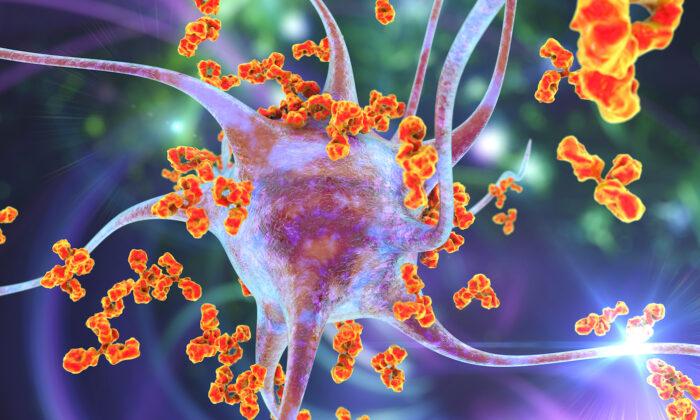Dotson says scientific advances like functional magnetic resonance imaging (fMRI) are allowing researchers to gain new knowledge of the most complex organ in the human body—and identify ways to protect it.
Q
A
It’s about being able to perform physical tasks and mental tasks, regulate our emotions, maintain our memory and cognitive abilities. All of that requires having healthy brain structure with good blood flow, with brain cells intact and communicating efficiently with each other. A combination of biological, environmental, and other factors affects our brain health, but in general if we give our brain the right care, we’re less likely to have significant problems as we age. The “right care” means staying physically, mentally, and socially active; eating a healthy diet; getting good sleep; and managing medical and mental health conditions.
Q
A
- Your memory or other cognitive problems interfere with your ability to carry out daily activities such as driving, cooking, or managing your finances.
- The changes happen abruptly.
- The changes happen after an injury or illness that affects your brain.
Q
A
Our behavior throughout our life affects how our brain ages, in the same way that our behavior throughout life affects our physical health as we grow older. A number of recent studies show that midlife and even childhood health conditions predict brain health in older adulthood. This is especially true for heart disease and conditions that increase the risk for heart disease, such as high blood pressure, diabetes, and obesity. This means we need to maintain healthy behaviors throughout our life to lower our risk for Alzheimer’s disease and other types of brain degeneration as we age.
I find that knowledge empowering because it means that there is a lot under our control. Even if you have difficulty accessing health care—for example, you’re in a rural area or have low socioeconomic status—everyone has some power to take control of their brain health.
Q
A
Exercise also increases production of brain-derived neurotrophic factor (BDNF), which is a chemical that is important for the health and survival of brain cells. It reduces neuroinflammation, and we know that chronic inflammation can cause problems for brain health.
Q
A
Some exciting new research shows that sleep functions like a rinse cycle. During sleep, cerebrospinal fluid (the clear liquid that surrounds the brain and spinal cord) clears the brain of toxic waste, including toxins that are linked to Alzheimer’s disease. This is probably the reason why studies show that people with chronically poor sleep are at greater risk for Alzheimer’s disease.
Q
A
Nutrition is also critical. What keeps our body healthy is also what keeps our mind sharp. A brain-healthy diet is very similar to a heart-healthy diet. For example, research shows that trans fats not only affect your heart, but they can also permeate brain cells, altering their ability to communicate. Over time, this can lead to problems such as cognitive impairment and depression.
Another key to keeping your brain healthy is to challenge it in a variety of ways. You can’t expect to just do more of the same activity and still get a benefit. Like cross-training for physical fitness, we get the most benefit when we engage in a variety of brain-healthy behaviors, and we need to keep it fresh. If you’ve been playing Sudoku for a while, mix it up with other hobbies that challenge your brain.
Q
A
We need to know more about how different cultural and social environments can contribute to brain changes throughout the course of life. For example, vascular depression results from damage to mood circuits in the brain due to vascular diseases, which are diseases that affect blood circulation. It’s more common in older, Black adults, likely because there’s a health disparity with vascular disease.
We have an ongoing project that’s testing an exercise intervention in this population to see whether it can change subjects’ brain health. We will be doing brain imaging, cognitive testing and mood assessments both before and after the intervention. We will also be looking for changing markers of inflammation in the blood, since we know that chronic inflammation is also tied to vascular disease. We expect this type of depression to be very responsive to exercise.
Q
A
It’s fascinating how some of the changes that happen in the aging brain overlap with some of the changes that we see in the brains of patients with depression. The area of the brain that is most affected by aging is the frontal lobes, especially an area called the prefrontal cortex. As we age, this region tends to get smaller and the connections between the prefrontal cortex and other parts of the brain gets weaker.
We see the same thing in people who are depressed. Decades of research has shown us that depression is linked to structural and functional changes in a network of brain regions that are also affected by the aging process. Both aging and depression are also associated with inflammation in the brain, with decreases in BDNF and with damage to white matter, the part of brain cells that is covered by myelin, which speeds up nerve impulses and connects regions.
Q
A
Research from my lab and from many others does indeed show that depressed older adults have more brain changes, such as volume loss, compared to younger people who are depressed or older people who are not depressed. There is also a link between depression and dementia. During my postdoctoral fellowship, I conducted research that showed that having a history of depression, especially multiple episodes of depression, increases the risk for dementia.
Using neuropsychology and brain imaging, we are working to understand how depression might present differently in younger people versus older people. Depression in older adults is associated with more cognitive problems than depression in young adults. There can be more problems with memory, multitasking, attention, and mental speed. Older adults with depression can also have more difficulty performing everyday activities, such as cooking or managing appointments, and finances.
We’re also discovering how changes in the brain are linked to different patterns of symptoms in depression. For example, symptoms like sadness, lack of motivation, or sleep problems could be caused by changes in the brain’s white matter. They could also be linked to reduced blood flow or inflammation. Mapping and connecting different biological changes to different types of symptoms is allowing us to improve treatment.
Q
A
Based on the current medical model, doctors tend to prescribe the same depression treatment, usually medication, regardless of the person’s symptom profile. But if we start to understand how different treatments affect different neurobiological mechanisms and how those mechanisms relate to specific depressive symptoms, we can choose treatments that target each person’s symptom profile.



